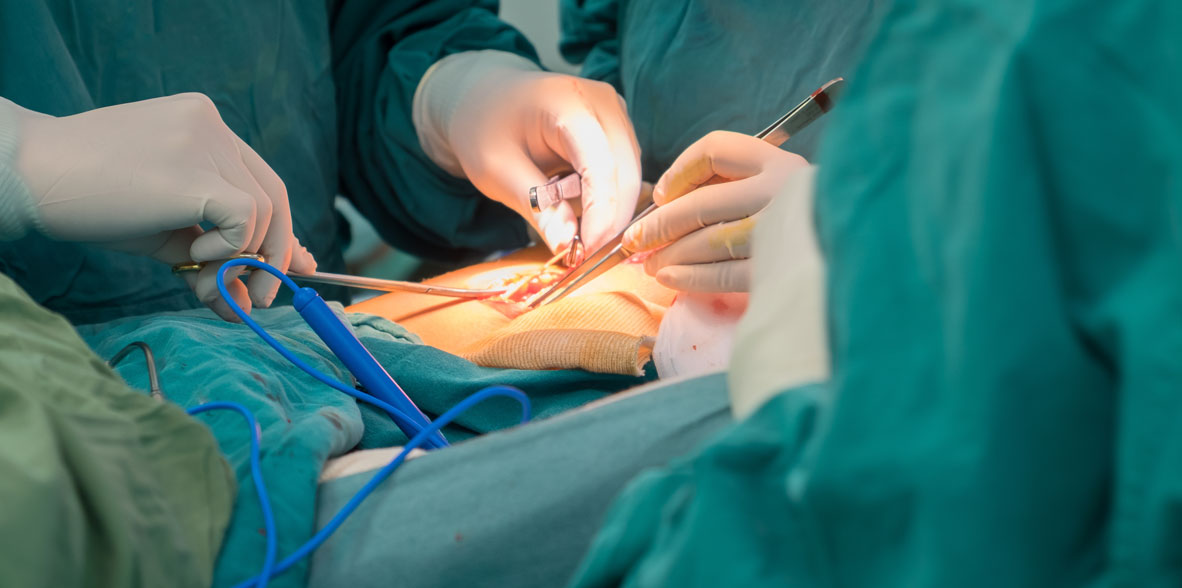

Definition
Anal fissure is an ulceration of the epidermal portion of the anal canal, extending from the pectine line to the margin of the anus.
Classification
Fissures are classified according to the time elapsed since the beginning of the disease and the morphology of the lesion in acute and chronic. There is no specific time to decide that a fissure has gone from acute to chronic. Therefore, the morphological description of each of these varieties is useless for treatment, since the important thing is the time that the patient has been suffering from the disease.
On the contrary, the existence of the so-called retrofissurary fistulas does have therapeutic importance. These fistulas are located below the path of the fissure starting from the pectine line and emerge on the cutaneous surface outside the fissure bed.
Epidemiology
The frequency of this disease is unknown. The most frequent age of presentation is between the second and fifth decades of life, being its distribution by sex similar in this period.
Below the age of 20 it is not frequent and these are easily manageable acute forms. Above 50 years its incidence also decreases, predominates in the male sex and are forms tending to chronicity. Etiology There are fissures secondary to other diseases, such as inflammatory bowel and sexually transmitted diseases, trauma, and operations, basically hemorrhoids and fistulas.
However, most fissures have an unknown origin. To find the causality of this disease, it is necessary to explain various facts of observation, related to it. The absence of scarring in chronic fissures, the scarce presence of granulation tissue in the wound, the predilection of the lesion by the posterior midline, the existence of a pain out of all proportion in relation to a wound, and finally the fact that they heal by making another wound.
To explain this disease, alterations in defecatory habit, basically constipation, and diarrhea have been implicated. However, in most of the series the proportion of patients with these alterations is around 20%. The anatomy of the anoderm has also been implicated in explaining these lesions.
One of the latest contributions to explain this disease has been the involvement of a dysfunction of the internal sphincter, which translates into an increase in basal pressure, objectively manometrically.
On the other hand it has been shown that the branches of the lower hemorrhoidal arteries pass through the intermuscular septa of the internal sphincter and that the branches had no or minimal contact in the posterior midline Based on these facts, Schouten et al., showed that blood flow was lower in the posterior midline, and that this flow decreased with increasing basal pressure and increased with decreasing basal pressure.
In summary, and according to this theory, the fissures would be ischemic ulcers. However, all this is still a hypothesis, since the basal pressure in chronic fissures overlaps with that of healthy people, the ischemic theory does not explain the fissures of the anterior and lateral midline, and on the other hand the attempts to reduce the pressure and heal the fissures through the so-called chemical sphincterotomy have not solved the problem. The revalence of the anal fissure is unknown. The etiology is not definitively explained.
Symptoms and signs
Anal fissure is mainly characterized by the intense pain that is triggered by deposition, or that appears a few minutes after it and can remain even hours.
In chronic fissure, the clinic is cyclical, alternating periods of apparent healing due to the absence of symptoms with periods with symptoms. In addition, the patient reports hematochezia and fear of defecation. Whatever the other symptoms of the fissure, the most characteristic is proctalgia at the end of defecation. The examination should be reduced to a simple inspection, while the patient performs a defecatory maneuver, to see if the patient has a fissure. In our experience these are located in 75% of cases in the posterior midline, in 15% in the anterior midline, in both lines simultaneously in 8% and only in 3% have a lateral location.
Digital rectal examination is not indicated to avoid pain to the patient unless a fissure is not observed, in which case it will be necessary to make a differential diagnosis with an endoanal abscess, a process that can cause a picture of pain sometimes similar to that of an anal fissure.
A survey of the patient's anal continence is necessary, since surgical treatment of fissures, as will be seen later, can lead to incontinence. In cases where there are symptoms of incontinence, and especially in women with a fissure in the anterior midline and history of vaginal births, the morphology of the anal muscles should be studied by ultrasound performed under sedation. A proper history and physical examination allow diagnosis of the lesion. The patient's continence should be assessed.
Approximately 70% of acute fissures resolve spontaneously or with medical treatment, the rest progressing to a chronic form. Medical treatment The classic treatment tries to break the vicious circle: pain - constipation, correcting the intestinal habit by providing fiber and sphincter hypertonia causing pain, through sitz baths with hot water.
It is less common to have to correct diarrhea; If so, the reason should be investigated and astringent diet and medication should be instituted. The use of ointments containing anesthetics or steroids can cause hypersensitivity reactions, and in the long term can produce contact dermatitis and atrophic dermatitis. Therefore, they are not recommended. Oral analgesia may be associated.
Chemical sphincterotomy
From the works previously mentioned in the etiology section, the use of products whose purpose is the reduction of basal pressure and with it the improvement of the blood supply to the anoderm has been introduced into medical practice. These products are: nitric oxide in the form of topical ointment and injection of botulinum toxin into the sphincter. Nitric oxide participates as a neurotransmitter in sphincter relaxation.
Botulinum toxin injection produces a denervation by blocking the motor plate, by inhibiting the presynaptic release of acetylcholine. The results obtained with topical nitric oxide refer to an effectiveness in terms of healing around 50%, ranging from 41%6 to 59%; But the high incidence of adverse reactions, especially headache is a drawback to take into account, registering from 33.8% to 78%, even forcing the abandonment of treatment due to its severity up to 10%.
On the other hand, it is also cited as inconvenient the fact of having to apply the treatment several times a day so that patients do not comply correctly. The results obtained with botulinum toxin register an effectiveness of 78%10 to 96%. It seems that toxin cures can be related to the dose used, the number and place of injection of the same. No major adverse effects have been reported, and continence problems have not been recorded.
It seems that these treatments can be an alternative in the treatment of anal fissure, however, the frequency of recurrences with both methods is around 50%. On the other hand, in chronic fissure, meta-analysis studies have shown that these treatments give worse results than internal lateral sphincterotomy.
Surgical Treatment
Meta-analysis studies comparing the most commonly used surgical techniques in the treatment of anal fissure have shown that lateral submucosal sphincterotomy is the surgical technique of choice in the treatment of anal fissure.
Preoperative and postoperative care
Antiembolic prophylaxis should be used. Postoperative care includes exclusively the administration of an analgesic regimen, and continuing with the use of stool formers. Immediate and remote complications The described complications of surgical treatment are: immediate bleeding, secondary bleeding, abscess formation, hemorrhoidal prolapse, and incontinence.
The frequency of these is variable in the medical literature. The figures for our center are reflected in Table 2. As for the figures of persistence or recurrence of the disease, the rates in our center, as in most of the series, are 1%. However, one of the most severe complications of this technique is postoperative anal incontinence that in varying degrees affects percentages of variable patients in the medical literature between the absence of the symptom and 30%.
In our center, a study was carried out that included 100 consecutive patients to whom we performed an internal lateral finterotomy, with the aim of determining the degree of postoperative incontinence in our Unit.
We can conclude that lateral sphincterotomy produces alterations in continence in 29% of treated patients, who had no previous continence alterations.
Given these data, in the literature and in our center the cutaneous plasty of advance is being evaluated to treat cases with associated incontinence, and even cases without this symptom.



































